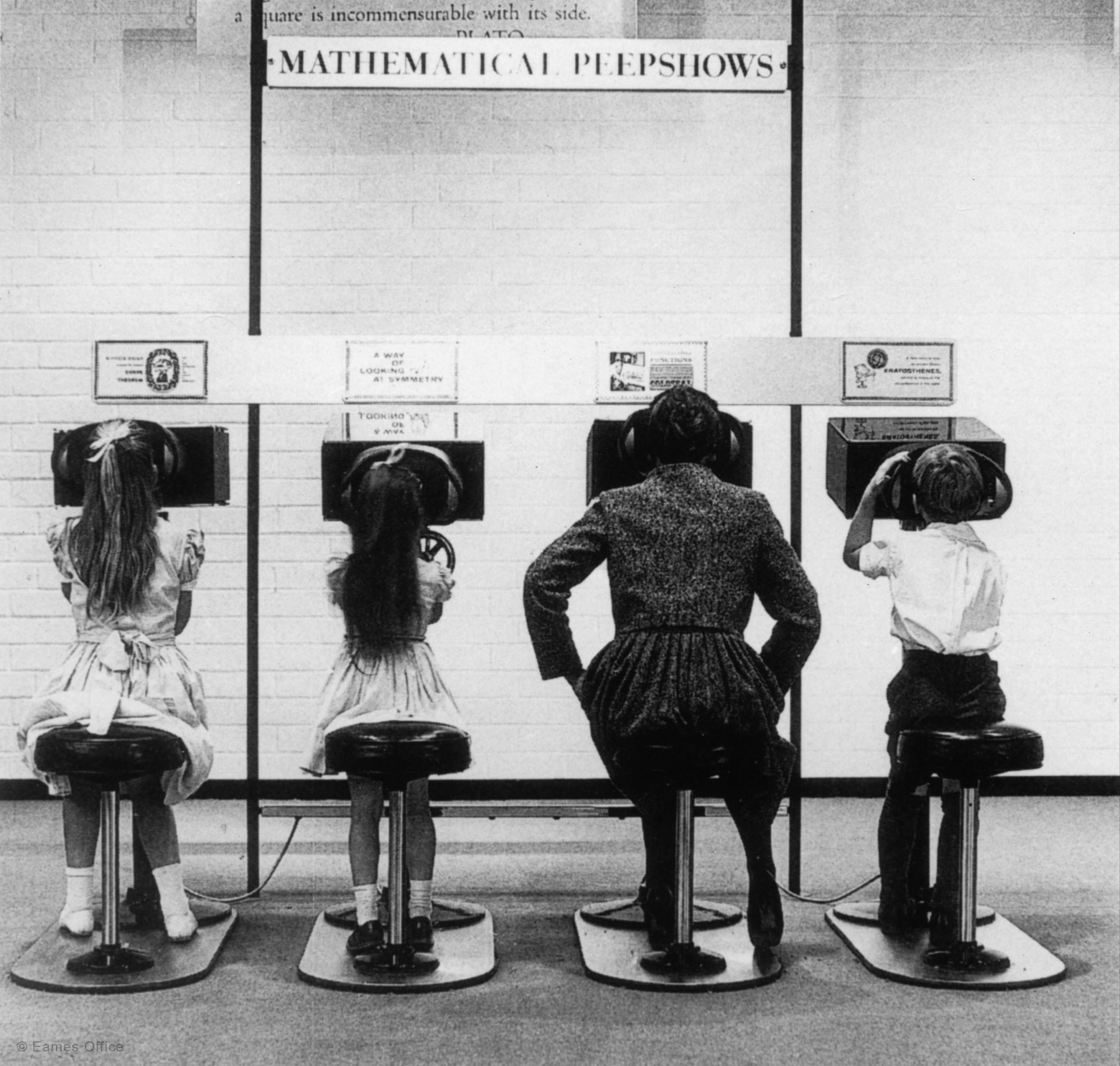Additional Information
Charles and the rest of the Eames Office responded with a show educating fundamental mathematic concepts through interactive devices and graphics. Mathematica included a wealth of interactive components, including funhouse mirrors to teach a lesson about transposition. Projective Geometry creates “an elaborate artifice,” which changes when looked at from different directions. The hypnotic balls of the Celestial Mechanics activity move faster and faster as they near the center of the cone, just as planets closer to the sun orbit more quickly due to the sun’s gravitational pull. The Office also designed a forty-foot-long, eight-foot-tall timeline of the “Men of Modern Mathematics” showing the history of mathematics from AD 1000 to the present.
More than fifty years after the original inauguration of Mathematica, the first show organized by the Eames Office, visitors continue to relish its beauty and multilayered exploration of how mathematics shapes our world. The exhibition continues to be more engaging and accessible than many of its modern-day counterparts. After it reopened in New York in 2004, Edward Rothstein explained in The New York Times that Mathematica “still exudes confidence. It invites attention not by promising participatory sensation but by offering beauty and elegance. It spurs curiosity not by aiming for simplicity but by offering hints of complexity.”
The book, An Eames Primer, explains that Mathematica “had its own standards and they were quite high. . . . In the words of Charles Eames, ‘It should be of interest to a bright student and not embarrass the most knowledgeable.'” In particular, the Eameses were fascinated by an observation that they heard early on in their research: though most people think of mathematics as being about numbers, the world of numbers actually represents just about one percent of the world of mathematics. Mathematica: A World of Numbers . . . and Beyond makes that idea extremely vivid to the visitor.
“As the first major exhibit of the new wing of the California Museum of Science and Industry, it was an ambitious goal. . . . Though Mathematica’s initial run was open-ended, it is fair to say that no one expected that 1961’s opening exhibition would be so popular that it would stay in place for almost 37 years. In fact, Mathematica outlasted the building itself. Since the building was closed (and then demolished) in 1998, the exhibition has traveled.” Today, three versions of Mathematica are currently on display at the Museum of Science in Boston, Massachusetts; the New York Hall of Science, in Queens, New York; and most recently, The Henry Ford Museum in Dearborn, Michigan.
Explore Similar Works
Related Products
Browse a curated selection of Eames Office products we think you’ll love








